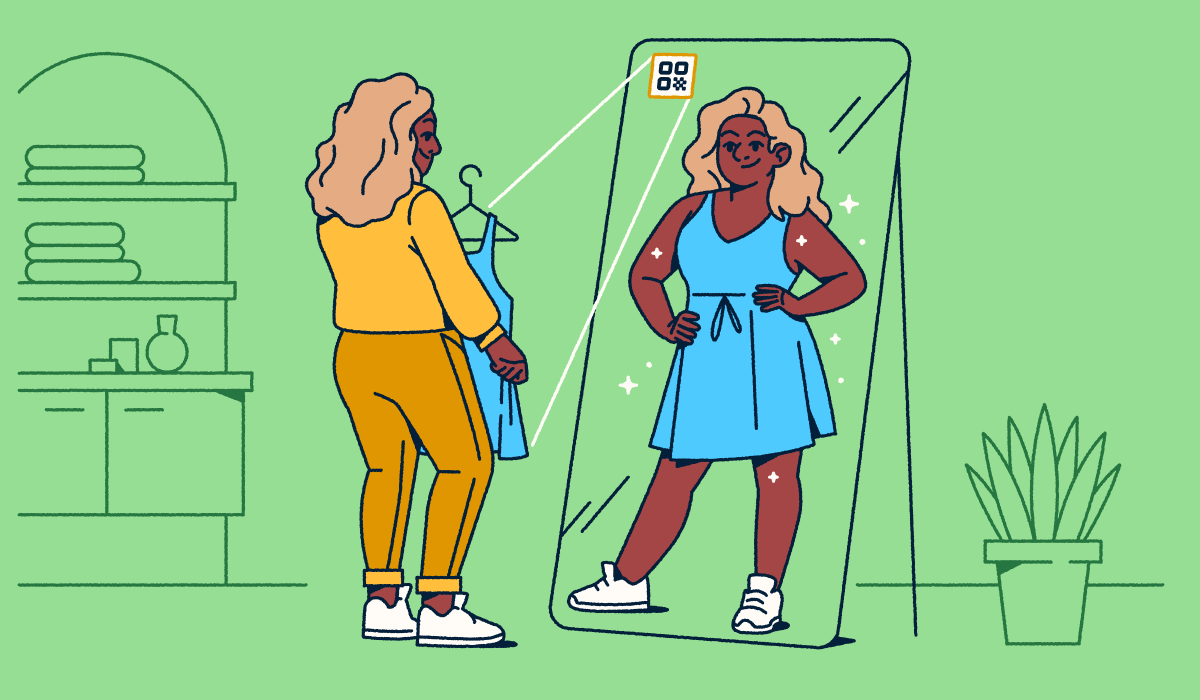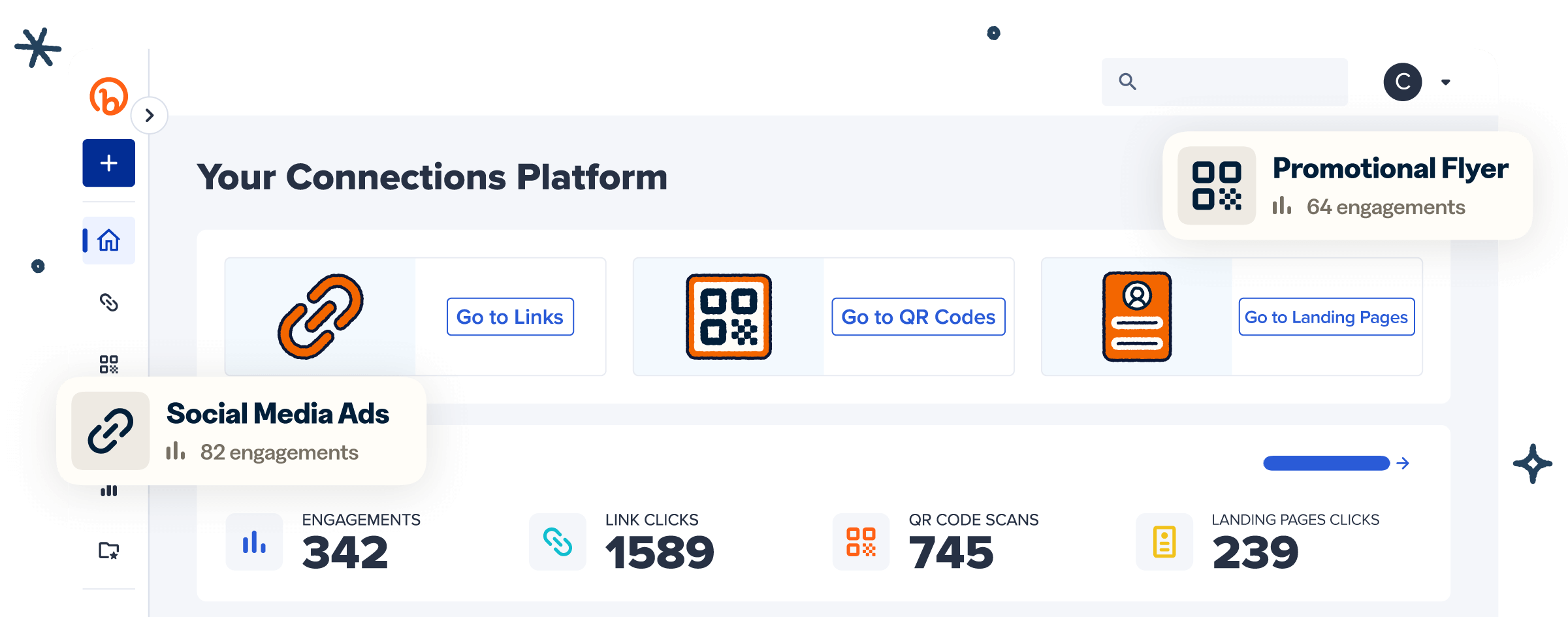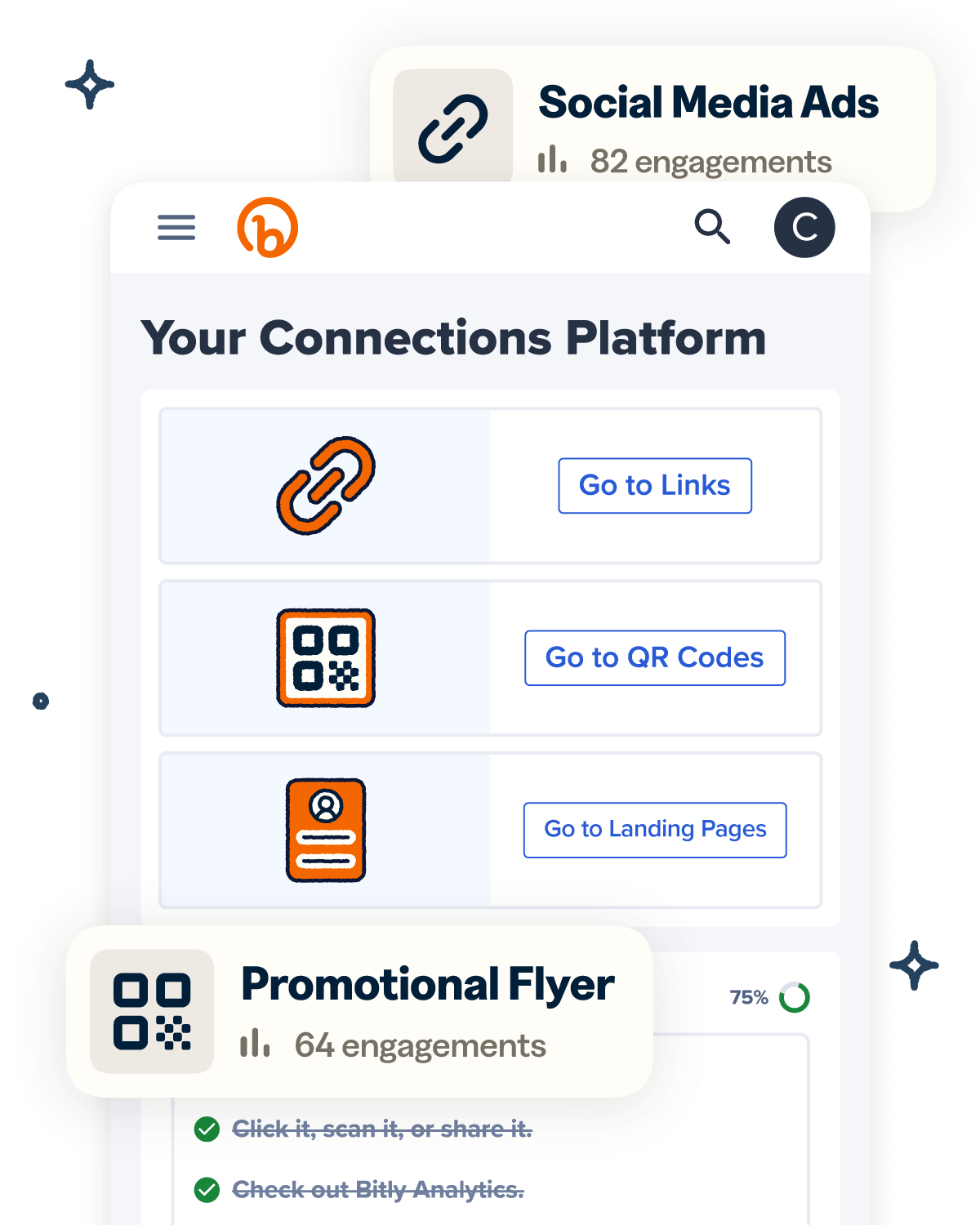Many household goods brands struggle to stand out on crowded shelves or engage customers beyond the initial purchase. With competition building in the consumer packaged goods (CPG) industry—and customers having more options than ever—brands have to find ways to attract potential customers and keep them interested post-purchase.
QR Codes are a great solution that can help brands boost customer engagement, streamline purchasing, and enhance post-purchase experiences by bridging the gap between physical products and digital experiences.
Whether they’re providing instant access to product information, driving loyalty program sign-ups, or helping you manage omnichannel engagement, QR Codes are an excellent, cost-effective way to elevate customer experiences and business operations.
Note: The brands and examples discussed below were found during our online research for this article.
QR Codes are transforming household goods marketing
QR Codes transform packaging from a simple tool that keeps products safe to a gateway to conversational commerce and seamless digital experiences. Modern brands use them to engage customers by linking them to conversation tools, tutorials, loyalty pages, and even gamified experiences.
Standing out on the shelf—capturing customer attention
The average retail customer takes only 4–20 seconds to choose a product from a grocery store shelf. With such a limited timeframe, you have to get creative to get customers to choose your household goods over competitor brands. QR Codes can help!
When you use QR Codes in grocery stores or other retail environments, they can differentiate your brand by instantly directing shoppers to valuable information like:
- Product tutorials or how-to-videos: Attracting customers who value convenient instructions or are new to your product.
- Sustainability or sourcing information: Appealing to eco-conscious consumers.
- Customer reviews or testimonials: Helping shoppers feel confident in their purchases.
- Conversation tools: For direct engagement with your brand.
Plenty of top brands are already using QR Codes for these purposes. Scrub Daddy features QR Codes on its product packaging as part of its sustainability initiative, directing customers to the Foam2Fuel Rewards Program for instructions on returning products for recycling.
To stand out when using QR Codes in retail, customize your codes with your brand’s colors and logo and accompany them with clear and visible calls-to-action (CTAs), such as “Scan for a Tutorial.” Including CTAs can also motivate in-store buyers to scan QR Codes, as they’ll know what to expect.
Example: A detergent brand uses a QR Code on the bottle, leading to stain removal guides and eco-friendly disposal tips. This eliminates the hassle of manually looking up instructions, enhancing buyers’ convenience.
Driving repeat purchases and customer loyalty
With the average marketing budget falling by 15% in 2024, brands need cost-effective strategies that work. One of the best ones is investing in customer loyalty. After all, it’s cheaper to retain customers than attract new ones.
QR Codes can help by directing customers straight to loyalty program sign-up web pages with exclusive discounts or rewards. Curology, a skincare brand, uses QR Codes to make their loyalty program and subscription sign-ups completely friction-free, encouraging more participation and repeat purchases.
Follow Curology’s lead and use QR Codes to provide subscription incentives, like discounts for signing up for automatic product deliveries. If you don’t offer subscriptions, use QR Codes to simplify reordering by providing instant access to product pages. This is one of the best ways to get repeat CPG sales, as it enhances customer convenience.
Example: A coffee brand uses a QR Code embedded with a short link to increase loyalty program sign-ups. By adding the code to their product packaging, they make it easy for customers to register for the program.
Engaging customers after purchase
Brands often lose engagement after checkout, resulting in missed future sales. QR Codes can prevent this by seamlessly extending your relationship with customers post-purchase.
When added to product packaging, QR Codes can lead customers to gamified experiences (giveaways, contests, sweepstakes), warranty registration pages, and even user-generated content (UGC) campaigns that encourage them to share their experiences with your brand. This keeps you in their minds well after checkout.
Example: A cookware brand adds a QR Code to its packaging or products, directing customers to a recipe contest where they can submit photos of their dishes. Engaging with customers post-purchase makes the brand memorable and increases buyers’ likelihood of returning for future purchases.
Where to use QR Codes on household products
Creating QR Codes linked to content or destinations that resonate with customers is only half the battle. You also have to pick a strategic QR Code placement to maximize engagement. Here, we look at some of the best places to use QR Codes.
Product packaging—the perfect QR Code touchpoint
Customers already expect product packaging to convey information about your brand or product. This makes it one of the best places to add QR Codes. You can use them to create smart labels for boxes, bottles, caps, and more.
But there are some best practices to keep in mind when using QR Codes on product packaging:
- Use Dynamic QR Codes: You can update their destinations without reprinting new codes, meaning you don’t need to invest in new packaging if you make a mistake or want to direct customers to alternative destinations. Plus, they include scan tracking for valuable engagement insights.
- Place your QR Codes somewhere easy to scan: The easier they are to scan, the more engagements you’ll see. Flat surfaces like bottle caps or the sides of packaging boxes are ideal options.
- Include a call-to-action: Provide context on what to do and expect. This inspires trust and encourages more scans.
- Ensure your codes are large enough to scan: The minimum QR Code size is 2 cm by 2 cm, but you may need to scale up to ensure the code stands out and remains easily scannable.
Example: A cleaning product features a Dynamic QR Code on its cap, directing customers to seasonal cleaning tips.
In-store displays and POP materials
Brands can amp up their in-store retail marketing with QR Codes by adding them to signage, displays, and point-of-purchase (POP) materials.
Use them to provide in-depth product details, making it easier for customers to compare items. You can also facilitate easy access to discounts and instant coupons or showcase how to use products for maximum value, elevating in-store shopping experiences.
To promote maximum engagement, use high-contrast colors. This makes it easy for customers to not only see your codes but also scan them with their mobile devices. And avoid crowding them with too many design elements, as it can impact scannability—maintain dedicated white space around the code to prevent interference.
Example: A vacuum cleaner brand uses a QR Code on an in-store display to show a side-by-side comparison with competitor models.
Digital and social media integration
QR Codes can bridge offline and online marketing efforts by linking to various digital destinations, such as:
- Your brand’s social media profiles for direct engagement.
- Customer review pages for social proof.
- E-commerce stores for quick online orders.
As with other QR Code placements, include a CTA that lets customers know what to expect to encourage scans.
Example: A skincare brand includes a QR Code in print ads, directing potential customers to a free sample request page.
Inserts and packaging accessories
Instead of filling inserts and packaging accessories with rows of text, use QR Codes to direct customers to whatever information you want to share. This is more convenient than reading small-font details and more environmentally friendly, as you can minimize paper use.
QR Codes on inserts and other accessories can be helpful for:
- Sharing thorough product use instructions or demo videos.
- Encouraging customers to share product reviews.
- Making it easier for buyers to register for extended warranties.
Example: A water filter brand includes a QR Code insert linking to a personalized filter replacement schedule, making it easy for customers to determine when to get new filters.
How to track and optimize QR Code campaigns
QR Codes aren’t just great for maximizing engagement—they’re also a data goldmine that can help you better understand your customers and improve future marketing campaigns. Here’s how to leverage them for campaign optimization.
What can you track with QR Codes?
Dynamic QR Codes track a range of scan data that can be helpful in future campaign optimization, including:
- Total scans: Help you identify the types of content, messaging, CTAs, or placement that resonate best with your target audience.
- Scans by location: Showcases geographic interest, which can help refine your targeting strategy.
- Scans by device: Helps you optimize future content for the most active smartphone users, whether iOS or Android.
- Scans by referrer: Let you know your scans’ sources to see what asset is driving the most conversions.
A/B testing and optimization strategies
With so much data at your fingertips, you can test various aspects of your QR Code marketing campaign to determine what drives your target audience to action. Test different CTAs, placements, offers, and even destinations, then check your QR Code performance data to see what works.
A good rule of thumb in A/B testing is assessing a single variable at a time. For example, start by trying out two different CTAs, and after finding what works best, move on to testing the QR Code placement.
Example: A pet food brand creates two QR Codes—one linking to educational content and the other to a discount coupon—and measures which one gets more scans.
Updating QR Code content without reprinting
After identifying what resonates with your customers, adjust your strategy to maximize engagement. For instance, if discount coupons get more scans than exclusive content like behind-the-scenes videos, incorporate more QR Codes linked to special offers in your campaign.
If you’re using Dynamic QR Codes, you don’t have to print new codes or wait for the next campaign to make changes. You can change the linked landing pages, offers, videos, and other assets at any time, without updating the packaging or regenerating the code.
It’s worth noting, however, that this may be contingent on whether or not your CTAs can apply to both the old and updated destinations. You don’t want customers to scan a code expecting one thing—only to get another.
Example: A beverage brand updates its QR Code seasonally to link to different cocktail recipes.
Why Bitly Codes are the best choice for household goods brands
Bitly Codes provide a superior experience for household goods companies, thanks to their customization capabilities, trackability, and versatility. Here’s an in-depth look at why they’re the perfect fit for your brand.
Build trust with custom-branded QR Codes
With Bitly, you can customize QR Codes with your business’ colors and logo to promote brand consistency and recognition. This builds trust and increases the likelihood of engagement. Depending on your plan, you can even use a custom domain and edit the back half of your link—a feature that appears after scanning a code. Plus, unique patterns and frames help your codes stand out, capturing customers’ attention on crowded shelves.
Example: A trendy cleaning product brand customizes its QR Codes with the company’s signature vibrant colors and logo for recognizability, encouraging customers to scan.
Data-driven marketing with Bitly Analytics
Bitly offers real-time tracking data via Bitly Analytics, giving you valuable insights into campaign performance and customer preferences for continual campaign optimization. With Bitly Analytics, you can see:
- Total scans over time
- Top performing codes
- Scans by location (city/country)
- Scans by device (iOS/Android)
- Scans by referrer
Flexibility across marketing channels
Bitly Codes work with any URL-based campaign, making them ideal for most digital marketing strategies. Whether you want to raise brand engagement by directing audiences to your social media pages, boost customer retention with loyalty program sign-ups, or increase product sales on your e-commerce store, Bitly Codes are just what you need.
Take your household goods marketing to the next level with QR Codes
QR Codes are the perfect marketing tools for household goods brands looking to stand out and enhance their customer engagement efforts. They create a seamless customer experience, from product discovery to post-purchase engagement, allowing shoppers to access everything from detailed product info to loyalty programs with a single scan.
But to maximize their potential, you’ll need a user-friendly QR Code generator with extensive customization and tracking capabilities.
With Bitly, you can create and customize Dynamic QR Codes for any URL-based campaign in minutes. You can also track your codes’ scans in real time and update their destinations any time—without reprinting—all through one intuitive platform.
Sign up for Bitly to elevate your household goods marketing campaign with trackable custom QR Codes!




